Improvement of MRI using a wireless radiofrequency resonator array
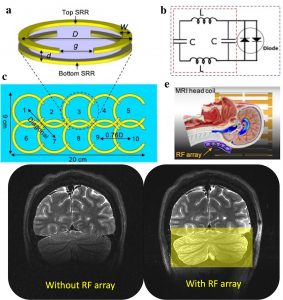
We developed a novel passive inductively-coupled radiofrequency resonator array design with a simple structure that works in conjunction with conventional coils and requires only to be tuned to the scanner’s operating frequency. We show that inductive-coupling between the resonator array and the coil improves the transmit efficiency and signal sensitivity in the targeted region. The simple structure, flexibility, and cost-efficiency make the proposed array design an attractive approach for altering the transmit field distribution specially at high field systems, where the wavelength is comparable with the tissue size.
7T MRI as a potential tool for detection of pathology in Alzheimer’s disease
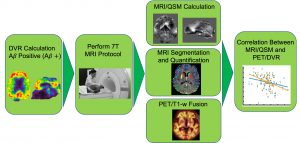
Early diagnosis of Alzheimer’s disease (AD) is still challenging, because of the subtlety of the microstructural changes it initially causes in the brain and the difficulty of identifying them with traditional neuroimaging techniques such as PET or CT, and MRI (1.5T, 3T) scans. Recent evidence has revealed that one of the neurodegeneration hallmarks of AD, amyloid-beta plaques is associated with iron accumulation, which can be quantified in vivo through susceptibility MRI techniques. We bring forward a new alternative framework using ultra-high resolution, MR neuroimaging at 7T, wherein this approach will enable the analysis of pathologic markers in AD patients and bring novel insights in our understanding of the mechanisms of AD onset and progression.
Developing adibatic RF pulses for Frequency shift imaging in 7T MRI
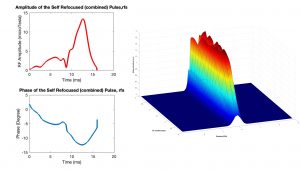
We used the adiabatic Shinnar Le-Roux method to generate a matchedphase adiabatic 90◦–180◦ pulse pair to obviate the need for a second adiabatic 180◦ pulse for phase refocusing. The pulse pair was then reformulated into a single self-refocused pulse to minimize the echo time, and phantom and in vivo experiments were performed to validate pulse performance. The self-refocused adiabatic pulse produced transmit profiles that were substantially more uniform than those achieved using a conventional spin echo sequence.
MRI Conditional Actively Tracked Metallic Electrophysiology Catheters
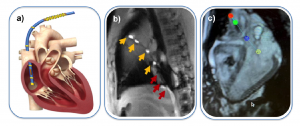
Cardiovascular interventional devices typically have long metallic braids or backbones to aid in steerability and pushability. However, electromagnetic coupling of metallic-based cardiovascular interventional devices with the radiofrequency (RF) fields present during Magnetic Resonance Imaging (MRI) can make a device unsafe for use in an MRI scanner. We aimed to develop MRI conditional actively-tracked cardiovascular interventional devices by sufficiently attenuating induced currents on the metallic braid/tube and internal-cabling using miniaturized resonant floating RF traps (MBaluns).
A new class of cubic SPIONs as a dual-mode T1 and T2 contrast agent for MRI
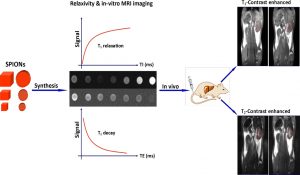
In this study, by taking advantage of the strong shape and size dependence of SPION’s performance, we synthesized a new class of cubic SPIONs as a synergistic T1– and T2-contrast-enhancement agent for MRI. We compared the performance of these cubic SPIONs with their sphericalcounterparts via measurements of molar relaxivities (r1 and r2) on a 3T MRI scanner. Here, we used silica for surface modification, since previous reports showed negligible toxicity level for nano-sized silica shells.
